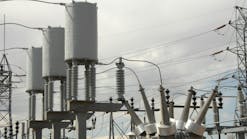It is easy to dwell on negativity, particularly concerning energy infrastructure trends. We frequently discuss issues related to grid reliability, resiliency, and aging infrastructure- increasingly severe storms, wildfires, cybersecurity, and power outages- the list of problems seems to be overwhelming lately.
America’s Infrastructure Grade
The American Society of Civil Engineers (ASCE), the oldest national engineering organization in the United States representing over 150,000 civil engineers who have long advocated for the care of the nation’s infrastructure, unveiled their 2021 Report Card for America’s Infrastructure on Wednesday, March 3rd.
Since 1998, ASCE has issued the Report Card for America’s Infrastructure. Using a simple A to F school report card format, the Report Card examines current infrastructure conditions and needs, assigns grades, and makes recommendations for improvement in seventeen categories of infrastructure pertinent to all Americans, including the energy sector’s infrastructure.
Overall, the nation’s infrastructure earned a ‘C-’ GPA. Admittedly, I would not be pleased if one of my children brought home this report card, but this is not entirely bad news. The 2021 Report Card is an improvement from 2017’s overall grade of ‘D+,’ revealing incremental progress toward restoring our nation’s infrastructure. In fact, this is the first time that the overall nation’s infrastructure has received a cumulative grade outside of the D range from the ASCE.
According to ASCE, the highest grade was the ‘B’ in the rail category, while the lowest was the ‘D-’ for the nation’s transit systems. The 2021 grades range from a B in rail to a D- in transit. Five category grades — aviation, drinking water, energy, inland waterways, and ports — went up, while just one category — bridges — went down. And stormwater infrastructure received its first grade: a disappointing D. Overall, eleven category grades remained in the D range, which ASCE says “ is a clear signal that our overdue bill on infrastructure is a long way from being paid off.” This sentiment is hardly surprising given the recent cascading infrastructure failures observed across almost every sector in Texas.
The Energy Grade
ASCE gave the United States energy infrastructure a grade of C-, which also increased from the last report card.
In our increasingly digital and connected world, we rely on readily available and uninterrupted electricity. Over the last four years, transmission, distribution, and reliability-focused investments have increased, and outages have declined slightly. According to ASCE, “annual spending on high voltage transmission lines grew from $15.6 billion in 2012 to $21.9 billion in 2017, while annual spending on distribution systems — the “last mile” of the electricity network — grew 54% over the past two decades.”
Rather than just repairing the grid after major storm outages, utilities are taking proactive steps to strengthen the electric grid through resilience measures.” Weather remains an increasing threat, with severe weather cited as the predominant cause of transmission outage events. The distribution infrastructure also struggles with reliability.
Raising the Grade
In the coming years, additional transmission and distribution infrastructure, smart planning, and improved reliability will accommodate the changing energy landscape, particularly as power delivery becomes distributed and the prevalence of renewable generation resources grows. To improve the energy sector’s infrastructure grade, the ASCE makes the following recommendations:
Adopt a federal energy policy that provides clear direction for meeting current and future demands factoring in technology change, carbon reduction, renewables and distributed generation, state and market-based factors, and rate affordability.
Require the adoption of consensus-based standards for all overhead T&D lines, structures, and substations to ensure safety and increase reliability.
Improve grid reliability by increasing frequency and effectiveness of critical asset inspections and focusing on robust risk mitigation; consider life cycle costs and technology impacts during system upgrades and replacements.
Develop a national hardening plan that considers investment in production/generation and power delivery to enable rapid restoration of energy systems after natural and manmade disasters.
Consolidate federal, state, and local environmental reviews and permitting processes so new T&D can be funded, create jobs earlier, and modernize energy infrastructure faster — while ensuring environmental and community impacts are fully vetted and considered.
Design energy infrastructure, including life-cycle cost analysis and construction of additional transmission grid infrastructure to efficiently deliver power from generation to regions with the highest demand requirements.
Want More?
Conversations surrounding the need to invest in America’s Infrastructure will undoubtedly increase with the recently unveiled $2.2 trillion Biden Infrastructure Plan, which the ASCE has applauded. For more information about the 2021 ASCE infrastructure Report Card, please visit https://infrastructurereportcard.org/
Additionally, on April 14th, T&D World hosted a webinar on this topic with Otto Lynch, a transmission expert, ASCE fellow, and the President and CEO of Power Lines Systems. You can watch this extremely informative webinar on-demand on our website at https://www.tdworld.com/members/webinars/webinar/21157973/webinar-the-2021-asce-report-card-for-americas-infrastructure-a-deep-dive-into-the-energy-grade
Until next time, stay safe and healthy.


